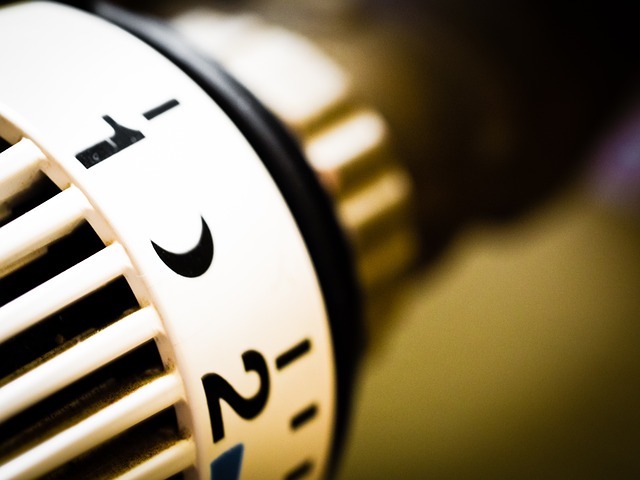11 Innovations Shaping the Future of HVAC

Article Found on BuilderOnline
With the rise of smart home technology adoption, home buyers increasingly expect new homes to be equipped with the latest technological advances, and the HVAC system is no exception. The entire HVAC industry is undergoing a technological revolution to keep up with the demand of home buyers and builders.
These new solutions help with efficiency, cut costs, and improve client satisfaction. Many of these technologies are still on the drawing board, but there are some you can take advantage of now to boost your homes’ comfort levels.
Movement-Activated Air Conditioning
Engineers at MIT have come up with a new air conditioning design that utilizes sensors along aluminum rods hung from the ceiling. Movement then activates these sensors. In other words, the air conditioner only kicks on when people are present.
A motion-activated system seems like such a simple, ingenious idea that it’s almost baffling it hasn’t been tried before now. However, this kind of prototype is just one example of how future HVAC systems are going to be more compact and portable, helping to reduce both energy and utility costs.
Thermally Driven Air Conditioning
Another design that’s recently been implemented is thermally driven air conditioning. An Australian company named Chromasun has produced a low-cost alternative to traditional A/C units. It isn’t a widespread technology yet, and it will likely be several years before this kind of design becomes widely available in the United States. However, thermally driven air conditioning is a system that uses solar energy and is supplemented by natural gas, making it a highly efficient and effective system.
In fact, the double-chiller design provides more cooling capabilities than any other system so far, and it eliminates electricity costs altogether.
On-Demand Hot Water Recirculator
A U.S.-based company out of Rhode Island and other manufacturers offer “on command” pumps for a home’s water lines, which allows cool water to be circulated back into the water heater upon activation.
This product was engineered to be a solution to a major problem to which all of us contribute: Each year, the average home wastes 12,000 gallons of water just waiting for that water to warm up. Recirculating this otherwise-wasted water back into the system is an eco-friendly solution that’s bound to play a huge part in future homes.
Ice-Powered Air Conditioning
A California-based company has created an ice-powered A/C system called the Ice Bear. The Ice Bear essentially works by freezing water in a tank overnight, so the ice can help cool a building the next day. So far, the design has been able to provide enough cooling for a building for up to six hours, after which, a conventional commercial air conditioner takes over.
Although this type of technology has quite a way to go before it can be the sole cooling system for a home, six straight hours of cooling a commercial building is a solid step in the right direction.
Sensor-Enhanced Ventilation
An ingenious product unveiled in 2015 consists of sensor-driven vents that replace a home’s existing ceiling, wall, or floor vents. The best part? A smartphone app can control the Ecovent, providing precise, room-by-room temperature control.
Additionally, the system utilizes sensors to monitor a home’s temperature, air pressure, and other indoor air quality factors. Even though this system design is new, it’s been well tested and has already hit the market. Therefore, this is one piece of technology you can take advantage of today.
Dual-Fuel Heat Pumps
Several U.S.-based companies offer products that rely on the dual-fuel heat pump concept. The argument is that heat pumps tend to be more efficient and provide the maximum amount of comfort when using a combination of fuel. In this case, the system is a combination of an electric heat pump and a gas furnace.
At low temperatures, the pump draws on gas heat to maximize efficiency. When the temperature rises above 35 degrees, electricity takes over. The initial costs associated with a dual-fuel heat pump are more than a conventional system, but the amount of money you can potentially save over the next several years more than makes up for the costs.
Geothermal Heat Pumps
Along those same lines, geothermal technology is a major investment that promises to save you much money over its lifetime. Geothermal heat pumps have been around since the 1940s, so they’re not exactly a new technology. Nevertheless, these products haven’t really caught on until recently.
With more homeowners waking up to the importance of going green, geothermal heat pumps have grown in popularity. A geothermal heat pump gets its energy directly from the earth through an underground looped pipe that absorbs the heat and carries it into the home. When cooling is needed, the process occurs in reverse, with the pump removing warmth in the home. A major bonus of having a geothermal heat pump is the availability of free hot water. Therefore, if you’re considering having geothermal technology installed in your home, ask your technician about this valuable perk.
Smart Homes
Connected systems and phone apps now allow us to control our home’s lighting, heating, cooling, security systems, surveillance, and entertainment at the push of a virtual button. It’s a no-brainer that these “smart” technologies will continue to evolve and become integrated into our homes, allowing us to control a home’s comfort levels down to the last detail. Since many of these innovations such as the Nest learning thermostat are already available on the market, this movement toward a smarter home has changed how HVAC engineers and designers approach the next big thing, which is good news for those of us who appreciate high-tech solutions.
Fully Automated Homes
As if owning a smart home wasn’t convenient enough, fully automated homes will soon become a reality. There are already technological solutions on the market that are allowing companies to experiment with automated appliances and other products. Therefore, it’s only natural that HVAC systems will one day be directly tied into other systems in your home, making adjustments according to the status of the rest of the house.
3-D Printed Air Conditioners
It may seem a little far-fetched, but 3-D printing has advanced rapidly over the last few years, so expecting products like 3-D printed A/C systems could very well be a reality one day.
In fact, a company called Emerging Objects has already created a 3-D printed “brick” that draws moisture out of an area to cool it. While this simple innovation can’t be used in extreme temperatures, and we’re still a far cry from 3-D printed air conditioners, it’s just one example of the power of such a simple technology. We never know what tomorrow may bring.
Harnessing Heat from a Computer
If you own a laptop and have ever used it for several hours in one setting, you know how much heat it begins to generate. One innovator named Lawrence Orsini, founder of Project Exergy, has seen how efficient computers are at generating heat. This is why he’s theorized they can be used for powering heating systems.
Harnessing heat from a product you already use every day is a smart idea. Why waste all that excess energy when you don’t have to?
It’s fun to speculate about the future of HVAC technology, but only time will tell which systems will make the cut and catch on with most homeowners.

